Fire of the sea: mesmerising footage of bioluminescent ALGAE glowing bright blue as photographer runs his hands through water off the coast of Australia
- Jordan Robin, 26, recorded the phenomenon at Plantation Point in Jervis Bay
- This rare event only occurs on the shoreline there once or twice each year
- It is caused by tiny organisms dubbed 'sea sparkle' that glow when disturbed
- Otherwise the microscopic creatures cause the water to look reddish instead
Mesmerising footage shows the moment bioluminescent algae glow bright blue as a photographer runs his hand through sea water off the coast of Australia.
Jordan Robin, 26, captured the gorgeous natural phenomenon which he found taking place at Plantation Point in Jervis Bay, on Australia's east coast.
The rare event — which only happens there once or twice a year — is caused by a microscopic organisms dubbed 'sea sparkle' that glow when disturbed.
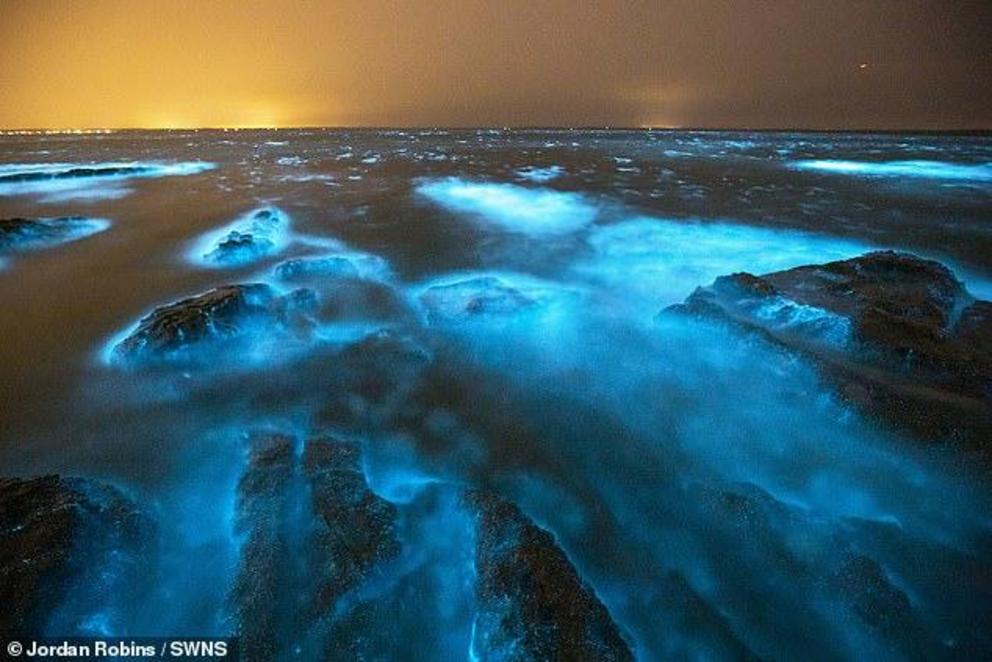 Jordan Robin, 26, captured the gorgeous natural phenomenon which he found taking place at Plantation Point in Jervis Bay, on Australia's east coast
Jordan Robin, 26, captured the gorgeous natural phenomenon which he found taking place at Plantation Point in Jervis Bay, on Australia's east coast
 The rare event — which only happens there once or twice a year — is caused by a microscopic organisms dubbed 'sea sparkle' that glow when disturbed
The rare event — which only happens there once or twice a year — is caused by a microscopic organisms dubbed 'sea sparkle' that glow when disturbed
In the video, the award-winning photographer can be seen moving his hand through the water, which triggers the algae to glow with an eerie, bright blue light.
'This rare occurrence only usually happens once or twice a year,' said Mr Robin, who hails from New South Wales, Australia.
'The video was taken on the 14th of January 2020.'
'What can be seen as a red tide during the day, the microalgae Noctiluca scintillans produces a bright blue glow at night, like seen in the video,' Mr Robin added.
Commonly called the 'sea sparkle', 'sea ghost' or 'fire of the sea', Noctiluca scintillans is a microscopic single-celled organism.
Each individual Noctiluca scintillans is around 0.02 inches (0.5 millimetres) in diameter and has a tentacle-like 'flagellum' that helps it eat plankton.
The microscopic creatures bob around in the water column, regulating their buoyancy in order to move up and down.
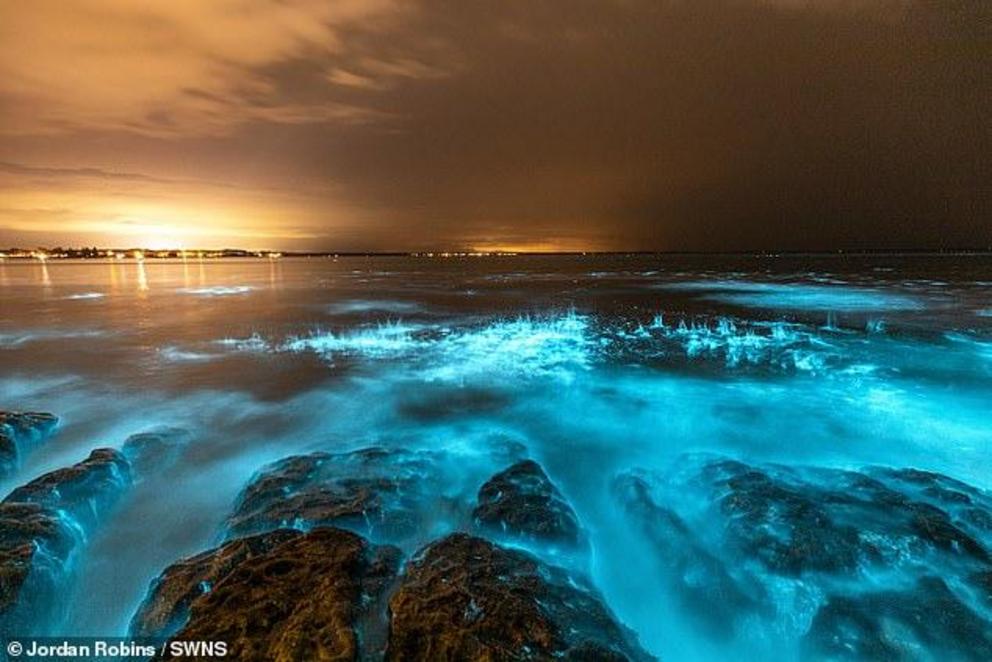 In his video, the 26-year-old award-winning photographer can be seen moving his hand through the water, which triggers the algae to glow with an eerie, bright blue light
In his video, the 26-year-old award-winning photographer can be seen moving his hand through the water, which triggers the algae to glow with an eerie, bright blue light
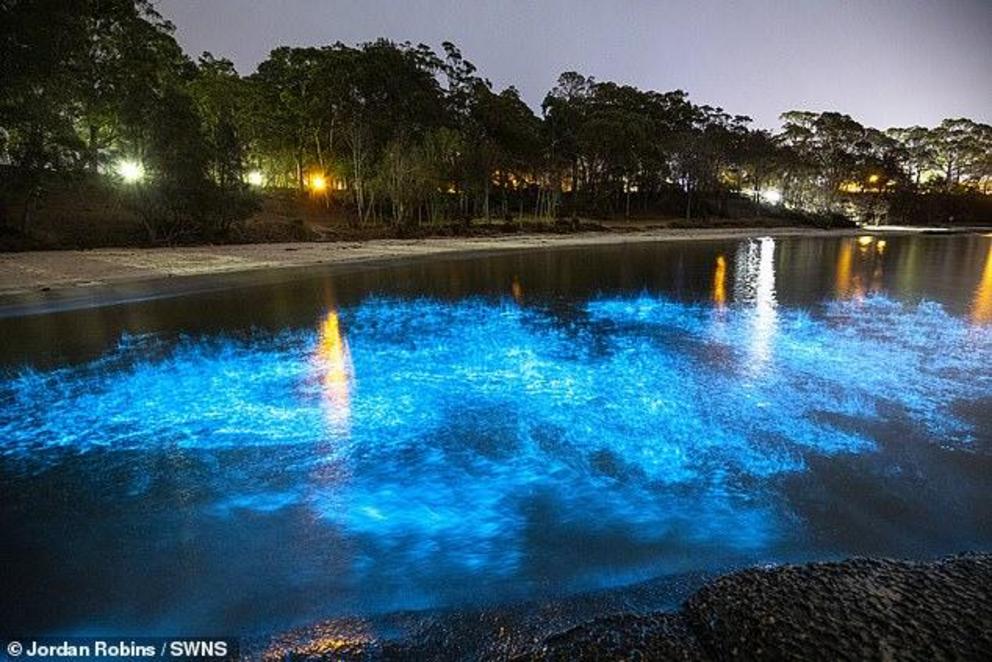 'This rare occurrence only usually happens once or twice a year,' said Mr Robin, who hails from New South Wales, Australia. 'The video was taken on the 14th of January 2020,' he added
'This rare occurrence only usually happens once or twice a year,' said Mr Robin, who hails from New South Wales, Australia. 'The video was taken on the 14th of January 2020,' he added
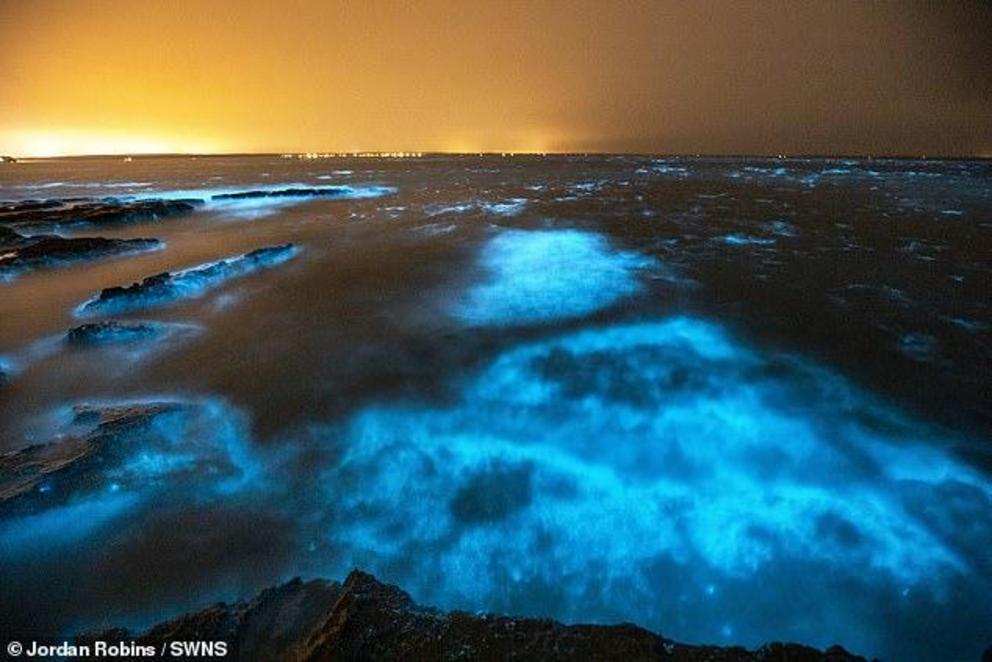 Commonly called the 'sea sparkle', 'sea ghost' or 'fire of the sea', Noctiluca scintillans is a microscopic single-celled organism
Commonly called the 'sea sparkle', 'sea ghost' or 'fire of the sea', Noctiluca scintillans is a microscopic single-celled organism
WHAT DO WE KNOW ABOUT SO-CALLED 'SEA SPARKLE'?
Commonly called the 'sea sparkle', 'sea ghost' or 'fire of the sea', Noctiluca scintillans is a microscopic single-celled organism.
They can appear as a red tide in the daytime but when disturbed, however, they glow bright blue.
In high enough numbers, this effect can even be detected by satellites orbiting the Earth.
This phenomenon is called the 'milky seas effect', or 'mareel' — as derived from the Old Norse for 'sea fire'.
Each individual Noctiluca scintillans is around 0.02 inches (0.5 millimetres) in diameter and has a tentacle-like 'flagellum' that helps it eat plankton.
The microscopic creatures bob around in the water column, regulating their buoyancy in order to move up and down.
They are found widely distributed across the world's oceans.
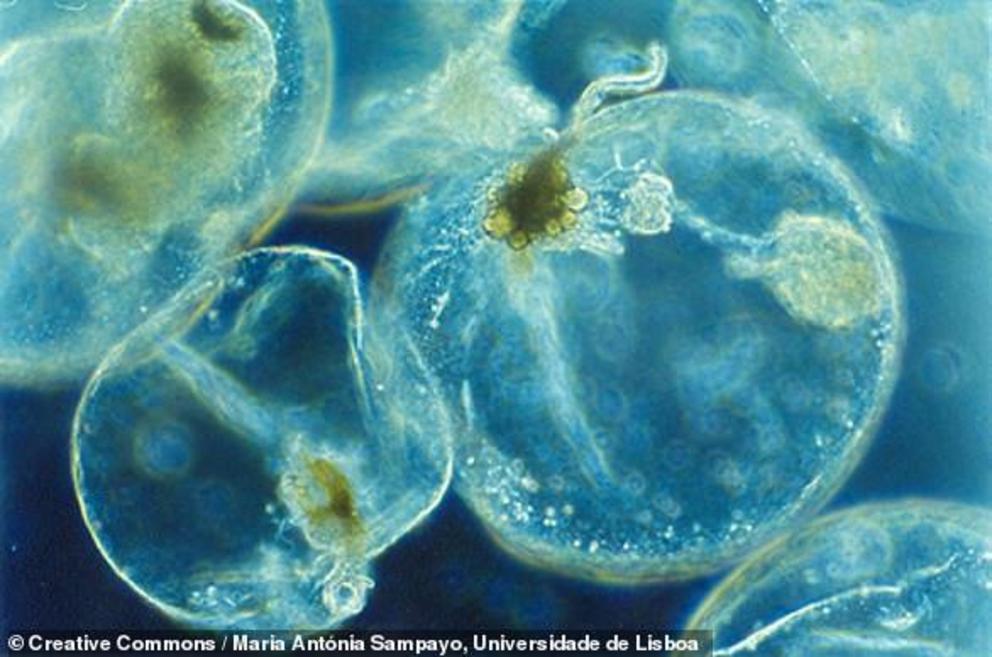 Pictured, Noctiluca scintillans as seen under a microscope
Pictured, Noctiluca scintillans as seen under a microscope
 Commonly called the 'sea sparkle', 'sea ghost' or 'fire of the sea', Noctiluca scintillans is a microscopic single-celled organism
Commonly called the 'sea sparkle', 'sea ghost' or 'fire of the sea', Noctiluca scintillans is a microscopic single-celled organism
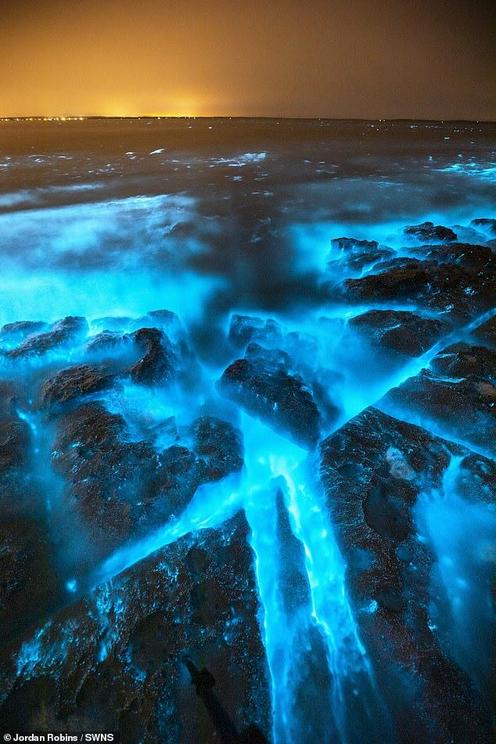 Each individual Noctiluca scintillans is around 0.02 inches (0.5 millimetres) in diameter and has a tentacle-like 'flagellum' that helps it eat plankton
Each individual Noctiluca scintillans is around 0.02 inches (0.5 millimetres) in diameter and has a tentacle-like 'flagellum' that helps it eat plankton
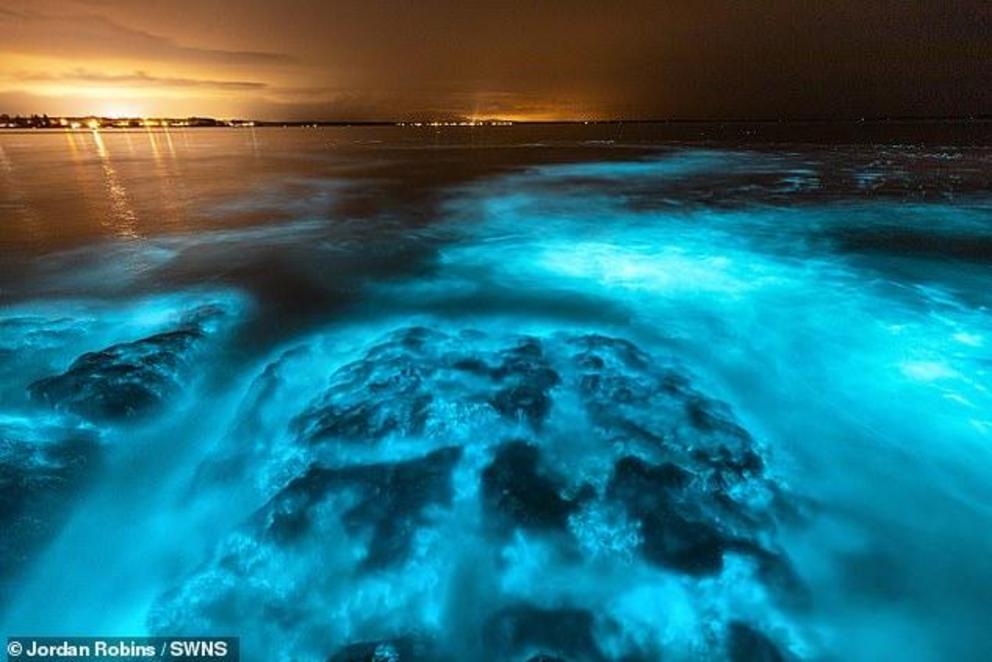 The microscopic creatures bob around in the water column, regulating their buoyancy in order to move up and down
The microscopic creatures bob around in the water column, regulating their buoyancy in order to move up and down
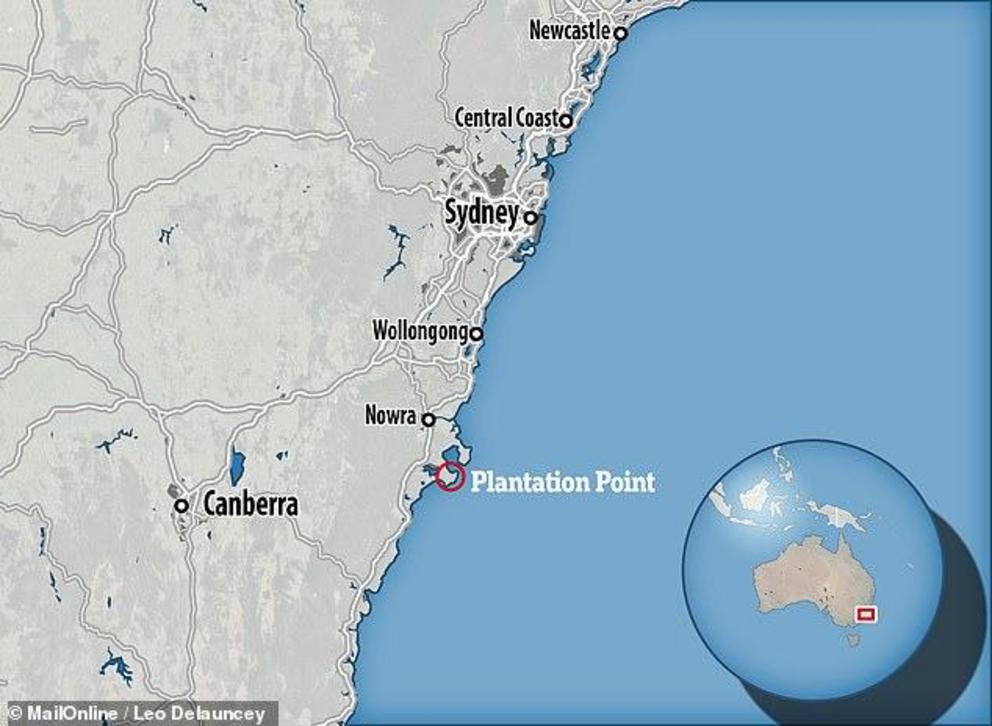 Jordan Robin, 26, captured the gorgeous natural phenomenon which he found taking place at Plantation Point in Jervis Bay, on Australia's east coast
Jordan Robin, 26, captured the gorgeous natural phenomenon which he found taking place at Plantation Point in Jervis Bay, on Australia's east coast

